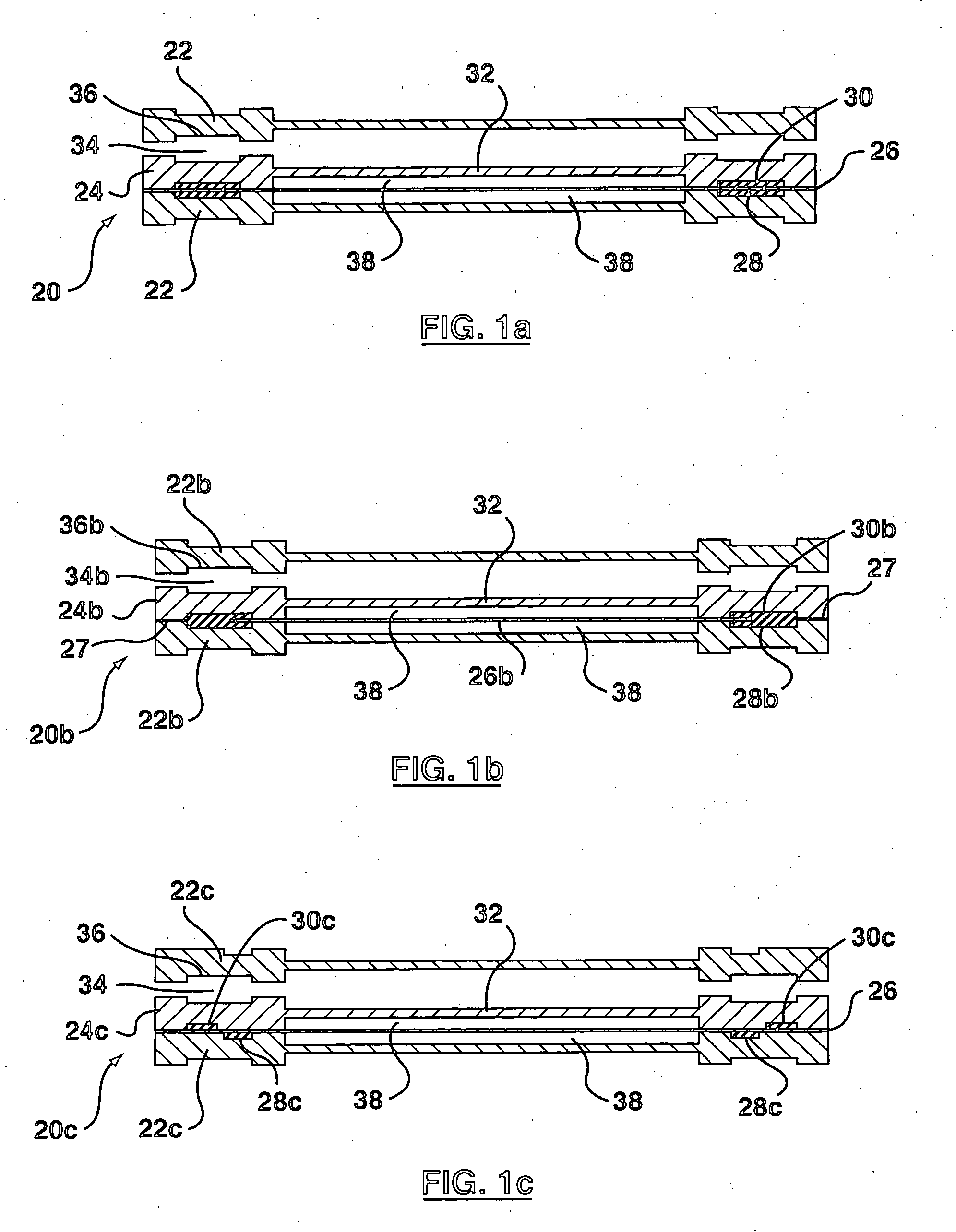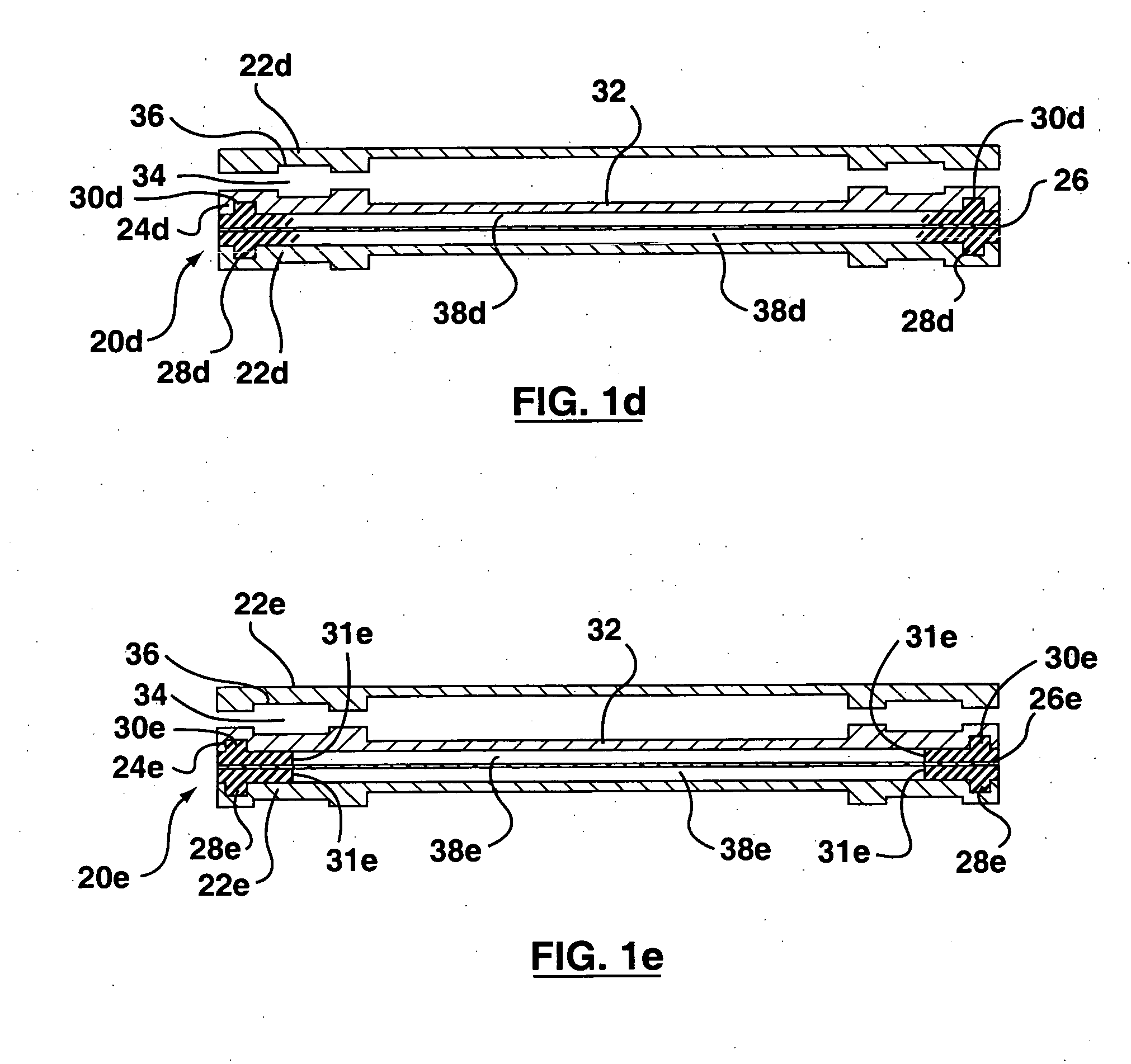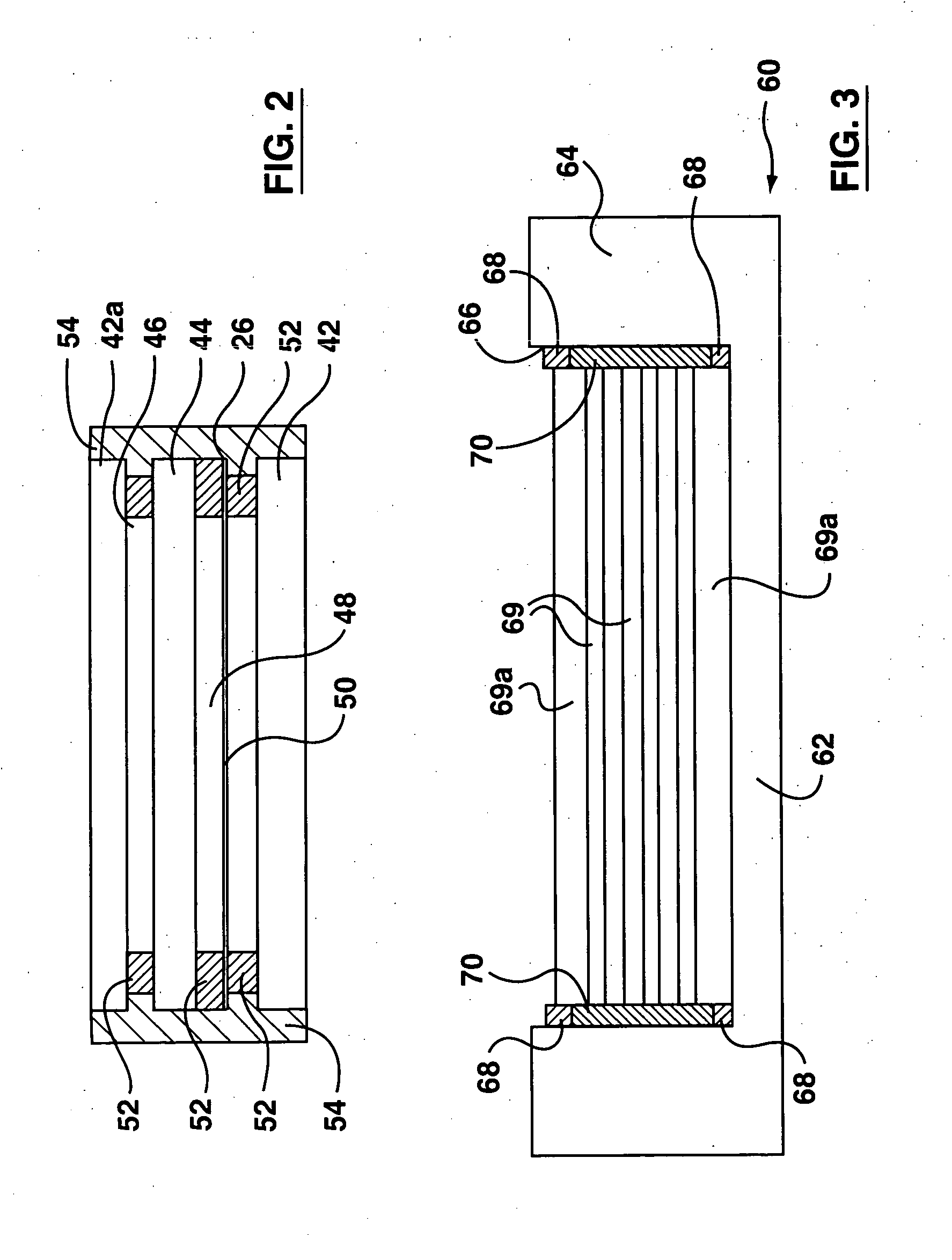Apparatus for and method of forming seals in fuel cells and fuel stacks
a technology of fuel cells and apparatus, applied in the field of fuel cells, can solve the problems of complex sealing arrangement, design can be quite complex, and the seals have to be of a relatively complex configuration, so as to improve the sealing effect, reduce the tolerance requirements for grooves, and improve the effect of robustness
- Summary
- Abstract
- Description
- Claims
- Application Information
AI Technical Summary
Benefits of technology
Problems solved by technology
Method used
Image
Examples
example 1
[0199]
TABLE IComposition of Silicone Base MaterialPartsIngredient100Dimethylsiloxane, Dimethylvinylsiloxy-terminated40Quartz40Silica, Amorphous, Fumed13Hexamethyldisilazane0.4Tetramethyldivinyldisilazane3Dimethylsiloxane, Hydroxy-terminated
[0200] 100 parts of a polydimethylsiloxane which is dimethylvinylsiloxy terminated and has a viscosity of 55,000 cp; 3 parts of dimethylsiloxane which is hydroxy terminated and has an viscosity of 41 cp; 40 parts quartz silica with an average particle size of 5μ; and 40 parts of fumed silica (with an average surface area of 400 m2 / g) that has been surface-treated with 13 parts hexamethyldisilazane and 0.4 parts tetramethyldivinyldisilazane were blended until homogeneity was achieved. After blending, material was heat treated under vacuum to remove ammonia and trace volatiles, and note that in general it is desirable to carry out this step for all the compositions described here to form a base material. This provides a shelf stable composition. Fin...
example 2
[0209] As in Example 1 above, elements of the fuel cell stack were assembled as in step (1)-(13) above. Again, a dispensing hose was connected to a threaded connection port 194 on the aluminum cathode end plate 104. The silicone material was dispersed into the assembled elements at a pressure that reaches 200 psig over a 30-40 second interval. The peak pressure of 200 psig was held until material was seen exiting the vent groove segments in each of the assembly plates, when the dispensing pressure was decreased to zero. The dispensing hoses were removed, and plugs 200 inserted as before. The stack assembly was placed in an oven preheated to 80° C., and kept in the oven until the seal material was completely cured. The stack assembly was then removed from the oven and allowed to cool to room temperature. The perimeter bolts were tightened to a uniform torque. The stack assembly was then ready to be placed in a fuel cell system.
example 3
[0210] Three additional examples were prepared, and these additional exemplary compositions were injected into a fuel cell stack and cured, as detailed above for examples 1 and 2. For simplicity and brevity, in the following example, details of the assembly and injection technique are not repeated; just the details of the compositions are given.
TABLE IComposition of Silicone Material APartsIngredients111.0Dimethyl, Trifluoropropylmethyl Siloxane, Dimethylvinylsiloxy-terminated39.0Silica, Amorphous, Fumed6.6Hexamethyldisilazane5.01,3-Diethenyl-1,1,3,3-Tetramethyldisiloxane Platinum Complexes2.9Decamethylcyclopentasiloxane1.0Dimethyl, Methylvinyl Siloxane, Hydroxy-terminated
[0211] 100 parts of a polydimethylsiloxane which is dimethylvinylsiloxy terminated, is 30 mole % methyltrifluoropropyl, and had a viscosity of 9,300 cst; 1 part of dimethylmethylvinylsiloxane which is hydroxy terminated and had a viscosity of 40 cst; and 39 parts of fumed silica (with an average surface area of 2...
PUM
| Property | Measurement | Unit |
|---|---|---|
| pressure | aaaaa | aaaaa |
| pressure | aaaaa | aaaaa |
| temperatures | aaaaa | aaaaa |
Abstract
Description
Claims
Application Information
 Login to View More
Login to View More - R&D
- Intellectual Property
- Life Sciences
- Materials
- Tech Scout
- Unparalleled Data Quality
- Higher Quality Content
- 60% Fewer Hallucinations
Browse by: Latest US Patents, China's latest patents, Technical Efficacy Thesaurus, Application Domain, Technology Topic, Popular Technical Reports.
© 2025 PatSnap. All rights reserved.Legal|Privacy policy|Modern Slavery Act Transparency Statement|Sitemap|About US| Contact US: help@patsnap.com



